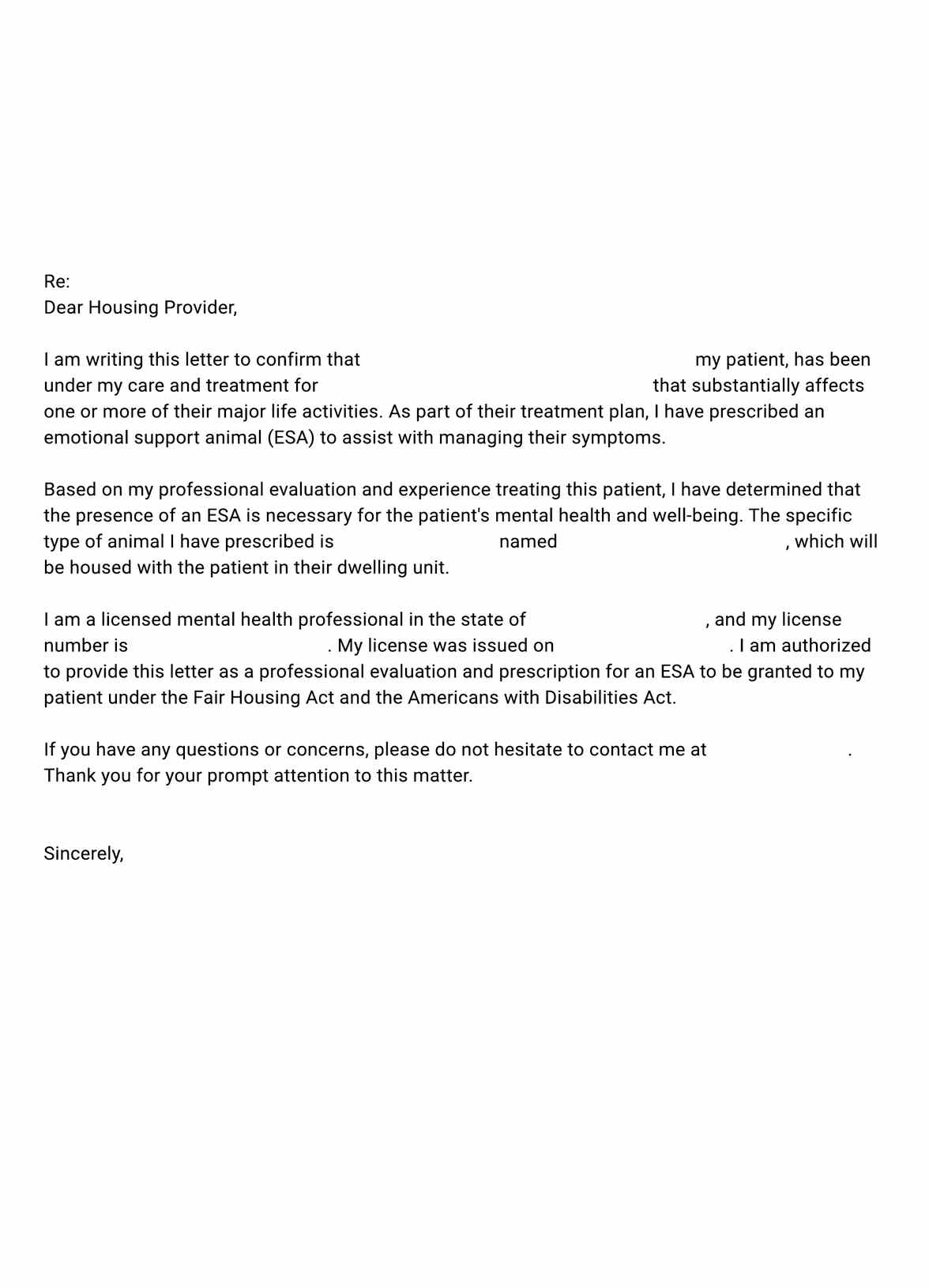
Access a free Emotional Support Animal Letter Template and sample to help you create a personalized ESA letter for your patient.

Fact Checked by RJ Gumban.


Emotional support is a critical factor for maintaining mental health and well-being. It can provide individuals with a sense of connectedness, belonging, and self-confidence that fosters emotional resilience. People who receive emotional support during challenging times are more resilient to stress, better able to cope with difficult situations and report feeling more hopeful about life.
However, not everyone has the same access to strong emotional support. In this case, an emotional support animal (ESA) can provide comfort and solace in challenging times for other individuals. ESAs offer companionship, love, and an outlet to express emotions without judgment. They can also be trained to recognize signs of stress and anxiety, providing comfort and help when needed.
The Fair Housing Act (FHA) and the Air Carrier Access Act (ACAA) protect individuals with disabilities, including the right to have an emotional support animal in certain circumstances.
A mental health professional licensed in a client's area can recommend an ESA as a form of treatment for individuals with mental health conditions such as depression, anxiety, PTSD, and more. They can write a letter granting legal protection to the ESA under federal laws and ensuring the animal can accompany its owner in residential settings that otherwise prohibit pets and on commercial airlines under the previously more lenient guidelines before recent changes.
When it comes to qualifying disorders for an ESA letter, it's essential to understand that a wide range of mental or emotional disabilities can potentially qualify. Generally, any condition or disorder recognized in the Diagnostic and Statistical Manual of Mental Disorders (DSM) significantly impairs an individual's ability to perform one or more major life activities that could qualify for an ESA.
Some of the most common qualifying disorders for an ESA letter include:
It's crucial to note that the mere presence of a diagnosed mental or emotional disorder is not enough to qualify for an ESA letter. The mental health professional must also determine that the presence of an emotional support animal effectively mitigates the individual's condition (Younggren et al., 2016). The ESA must provide therapeutic benefits and alleviate one or more identified symptoms or effects of the disability.
Additionally, the mental health professional should consider the individual's ability to care for and maintain the ESA's well-being and any potential impacts on others in the living environment (Hahn et al., 2020).
Practitioners should know specific requirements when integrating an ESA into a patient's treatment plan. While ESAs do not require the same training as service animals, there are still essential criteria and considerations to address.
While both types of animals can assist individuals with disabilities, they have distinct legal definitions, rights, and responsibilities.
ESAs provide comfort and support in the form of companionship and affection for individuals suffering from mental or emotional disorders. Unlike service animals, ESAs are not required to perform specific tasks related to a person's disability. Their primary role is to offer emotional stability and alleviate symptoms of psychological disorders.
More importantly, ESAs are not limited by species. This can go beyond writing an emotional support dog letter. Various animals can qualify as ESAs. However, ESAs generally do not have access rights to public spaces, like restaurants or stores, unless pet-friendly places exist.
In contrast, service animals are specifically trained to perform tasks for the benefit of an individual with a disability, including physical, sensory, psychiatric, intellectual, or other mental disabilities. The most common examples are guide dogs for the blind or visually impaired, but service animals can also be psychiatric service dogs who assist with tasks such as pulling a wheelchair, alerting to sounds for people who are deaf or hard of hearing, or even detecting an impending seizure.
Under the Americans with Disabilities Act (ADA), service animals are entitled to accompany their owners in most public areas where pets are typically not allowed. This includes restaurants, schools, and other places open to the public.
To further support the needs of individuals requiring emotional assistance, consider utilizing various templates available, such as the service dog letter, ESA letter template, and emotional support animal letter template. These templates ensure compliance with legal requirements and provide standardized documentation for healthcare providers.